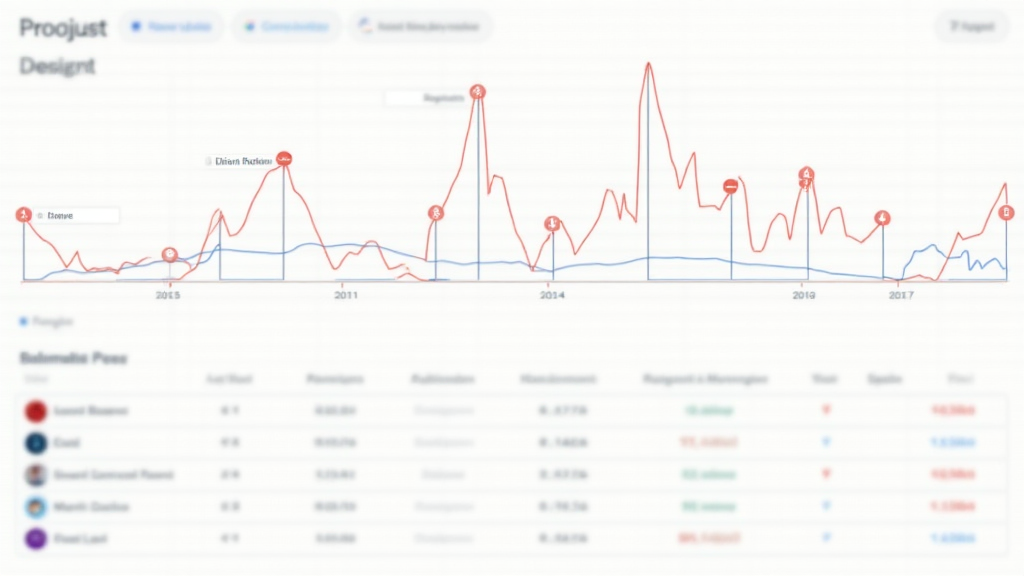Understanding Bitcoin Peer Group Analysis: Insights and Strategies
With billions allocated to Bitcoin investments annually, understanding peer group analysis has become a fundamental aspect of crypto risk management. Investors often face a dilemma: how to choose the right entry point in an ever-volatile market?
1. What is Bitcoin Peer Group Analysis?
Bitcoin peer group analysis refers to the process of comparing Bitcoin’s performance and characteristics to those of other cryptocurrencies (or peers) within a specific timeframe. This analysis helps investors understand how Bitcoin stands relative to its peers, offering insights into potential investment strategies.
1.1. Why is it Important?
- Identifies market trends: It helps investors analyze market trends and price movements.
- Risk assessment: This analysis allows for informed risk assessments based on peers’ performance.
- Strategic positioning: Understanding where Bitcoin stands in comparison to other cryptocurrencies can inform strategic positioning in one’s portfolio.
2. Key Components of Bitcoin Peer Group Analysis
Understanding the components that underpin this analysis is crucial to its effective application. Here are the primary components:

2.1. Performance Metrics
Evaluating the historical performance of Bitcoin and its peers based on several metrics:
- Market capitalization: Compares Bitcoin’s market cap to its peers, indicating overall weight in the market.
- Volume traded: Helps understand liquidity levels and investor interest.
- Volatility stats: Identifying how much price swings occur provides insight into risk.
2.2. Network Fundamentals
- Transaction speeds: How quickly transactions can be processed compared to other coins.
- Transaction fees: Analyzing average fees can indicate the usability and accessibility of Bitcoin.
- Hash rates: Understanding network security by analyzing the hash rates of Bitcoin against its peers.
3. Conducting Peer Group Analysis: Step-by-Step
Here’s a detailed approach to conducting Bitcoin peer group analysis:
3.1. Select Peer Group
Choose a set of cryptocurrencies that represent your analysis goals. Ideal peers often include:
- Similar market cap currencies
- Currencies with shared technological frameworks
- Recently launched tokens within similar niches
3.2. Collect Data
Collect data regarding performance metrics and network fundamentals from reliable sources like CoinMarketCap or CryptoCompare.
3.3. Analyze and Compare
Utilize tools and statistics to visualize data, comparing key metrics such as those mentioned above.
4. Real-world Application of Bitcoin Peer Group Analysis
Peer group analysis can be likened to how investors approach traditional stocks. For instance, when investing in tech stocks, analysts often look at companies like Apple, Microsoft, and Google. A similar approach should be adopted here:
4.1. Strategic Investments
By comparing Bitcoin’s metrics against its peers, investors can identify moments to enter or exit the market more effectively. For example, if Bitcoin’s volatility is lower than that of other significant players in the market, it might indicate a safer investment opportunity.
4.2. Risk Management
Using peer group analysis, investors can pinpoint specific risks associated with Bitcoin versus its peers. This could mean adjusting one’s investment in Bitcoin should volatility spike relative to altcoins or emerging tokens.
| Cryptocurrency | Market Cap ($) | 24-Hour Trading Volume ($) | Volatility (%) |
|---|---|---|---|
| Bitcoin | 500B | 30B | 3.5 |
| Ethereum | 220B | 20B | 4.8 |
| XRP | 35B | 2B | 5.2 |
5. Adjusting Strategies Based on Peer Group Insights
As market dynamics evolve, so should investment strategies. Here’s how to align your strategies utilizing peer group analysis:
5.1. Monitoring Trends
Continuously monitor peer metrics to adapt investment strategies dynamically.
5.2. Diversification
Based on peer performance, consider diversifying your crypto portfolio to mitigate risks.
5.3. Historical Context
Historical data adds a layer of context, helping predict future movements and guiding buy/sell decisions.
Conclusion
In essence, Bitcoin peer group analysis forms a cornerstone of successful investing in today’s crypto landscape. By comprehensively understanding Bitcoin’s position relative to its peers, investors can make informed decisions that enhance their portfolio’s performance. Remember, market dynamics are constantly shifting, and adapting strategies as new data arises is key for success in this unpredictable environment.
As cryptocurrency adoption grows, especially with the increasing number of users in emerging markets like Vietnam, leveraging tools for peer analysis becomes a necessity. With Bitcoin at the forefront of this transformation, insightful analysis remains as crucial as ever.
For those looking to enhance their crypto knowledge, check out additional informative articles on our site, and always stay updated on the latest trends. Get involved in the evolving world of Bitcoin and cryptocurrencies with our expert analyses.
mycryptodictionary empowers crypto enthusiasts with tools and resources, ensuring your investment journey is both informed and secure.
Written by Dr. Alex Hoang, a financial analyst and blockchain strategist with over 15 published papers in cryptocurrency and technology audits.





